
[ad_1]
I gave an Previous World postmortem at GDC 2022, which is accessible on YouTube:
Nevertheless, I absolutely scripted the discuss forward of time, so I made a decision it will be price taking the time to publish the slides on-line, in three elements to have mercy in your browser.
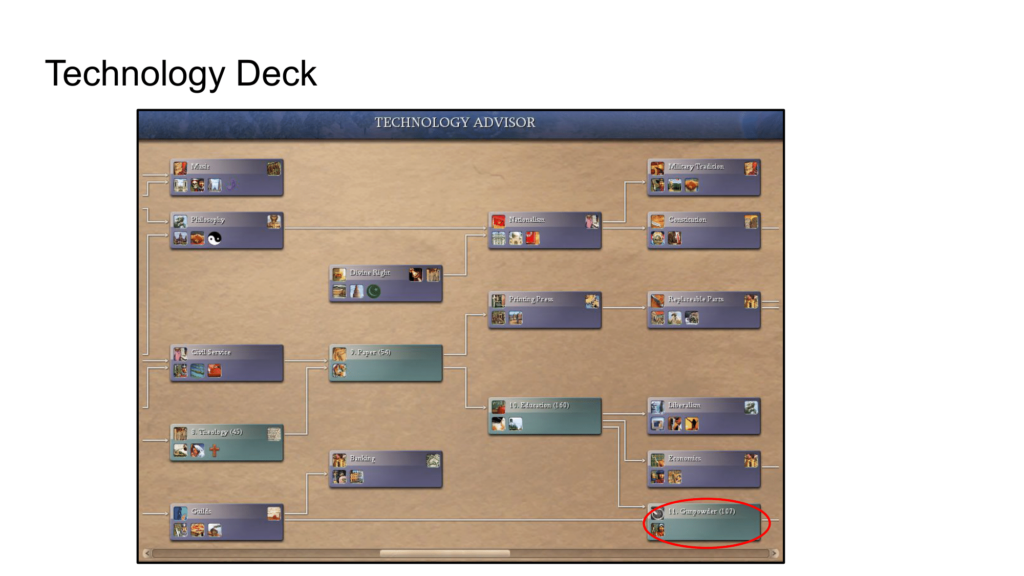
Now, let’s discuss in regards to the tech tree, which has all the time had an issue with golden paths. For instance, initially of Civ 4, you may simply click on on Gunpowder, and the sport will present you precisely which 11 applied sciences to analysis to get there. For a sport with common playtimes within the tons of of hours, this turns into an actual drawback. Certainly, with the recognition immediately of video games based mostly on random runs, mounted tech timber are going towards the grain of latest design.
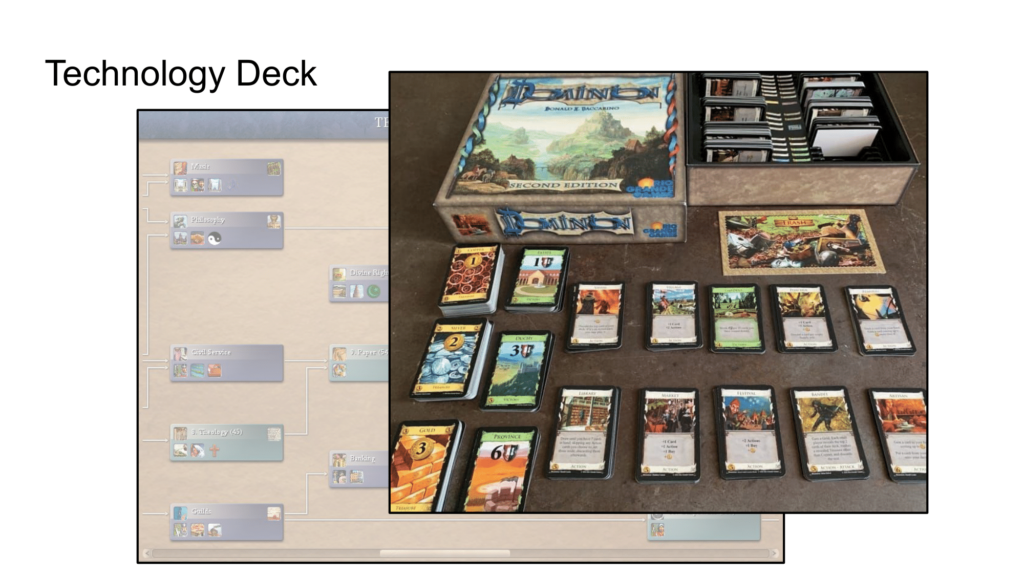
I discovered an answer from deck-building video games like Dominion – what if we handled all of the techs like playing cards as an alternative?
So, all techs at the moment obtainable are within the deck, and also you draw 4 at a time. The playing cards you don’t choose go into the discard pile together with any new playing cards that you just unlock. Then, you draw 4 extra on your subsequent alternative and don’t reshuffle till you may have exhausted the deck. This doesn’t simply add selection – it additionally makes the selections extra attention-grabbing as a result of you realize that if you don’t choose a tech, it gained’t be obtainable once more till it comes all the way in which again via the discard pile via the draw pile after which again to your hand. Passing on Ironworking implies that you won’t see it once more for a very long time.
The system is definitely extra difficult than a conventional tech tree, however it helps quite a bit that many gamers are already accustomed to deck-building mechanics due to their reputation.
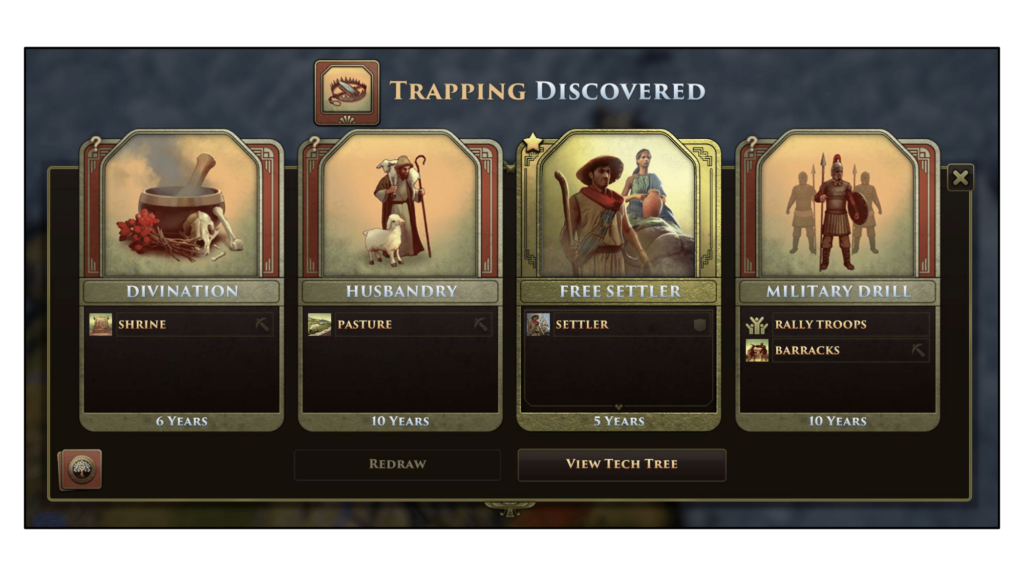
Turning techs into “playing cards” additionally permits the thought of bonus playing cards, which give an on the spot increase, like a Free Settler, as you see right here, or a Nice Scientist or a lump sum of Stone. There’s a good short-term vs. long-term tradeoff right here as science factors should not simple to come back by, so slowing your progress for a short-term increase is a troublesome alternative, an attention-grabbing determination.
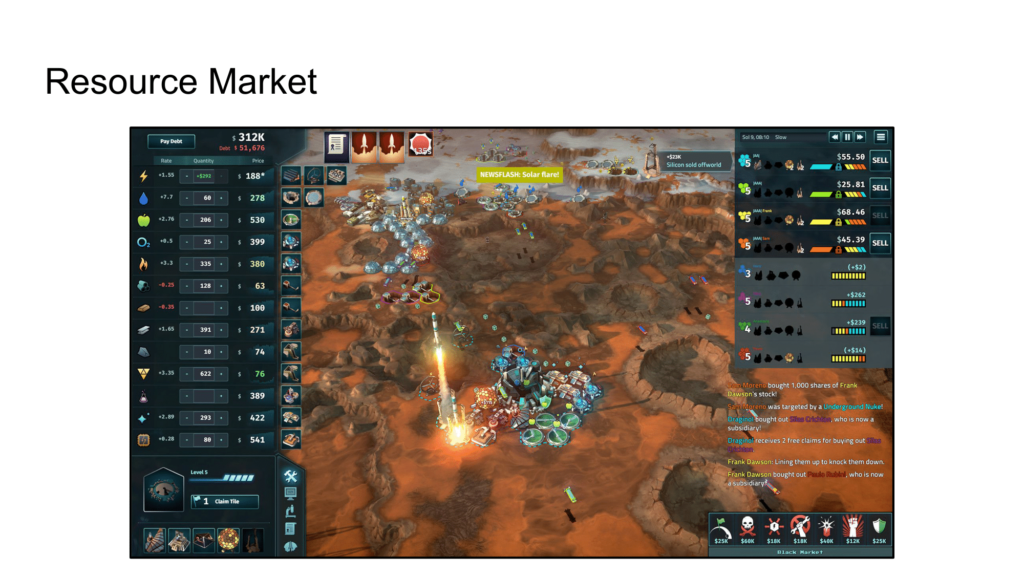
In the event you’ve performed my final sport, Offworld Buying and selling Firm, you realize that I like stockpiles and markets and constructing enhancements that spit out assets at totally different charges, so I wished to offer {that a} attempt for Previous World.
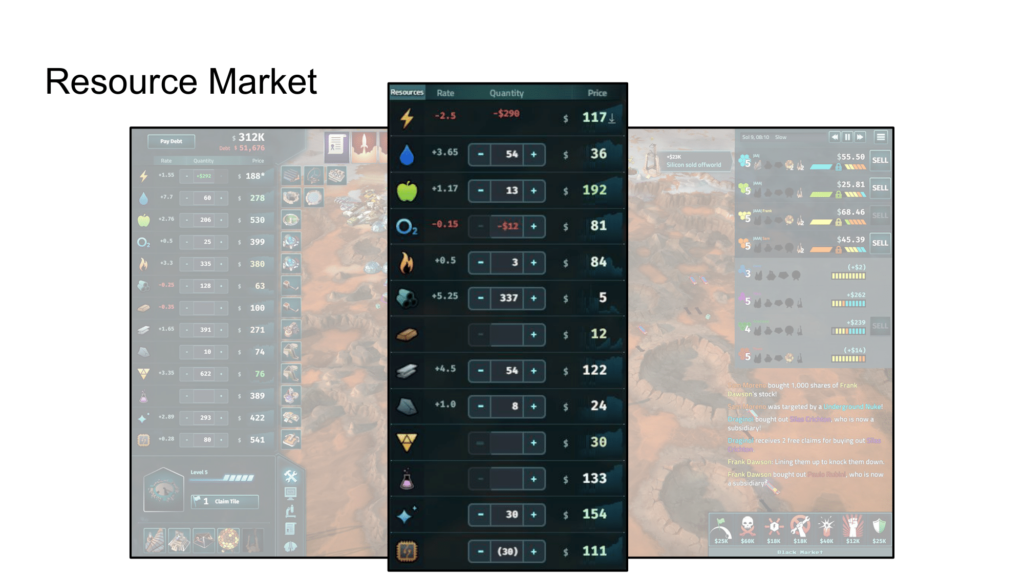
One of many causes Civ video games haven’t accomplished that is that cities can get caught as a result of they couldn’t construct one thing – if in case you have no entry to Stone, are you simply not capable of construct buildings? What occurs every flip then? We solved that drawback by borrowing the dynamic open market from Offworld.
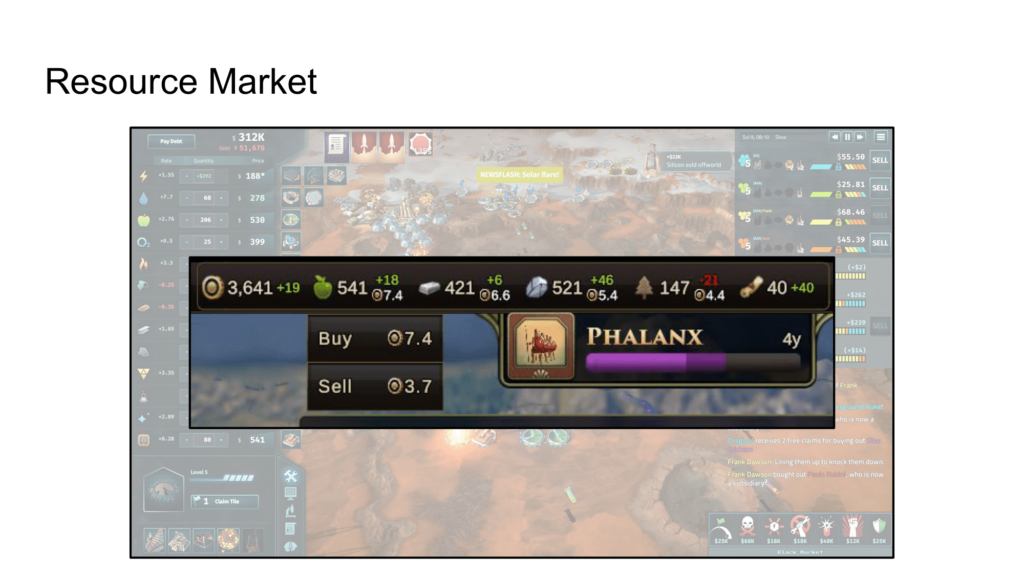
Want some iron to construct a Swordsman? Simply purchase it from the market. If the worth of iron is just too excessive, then unload your extra stone first.
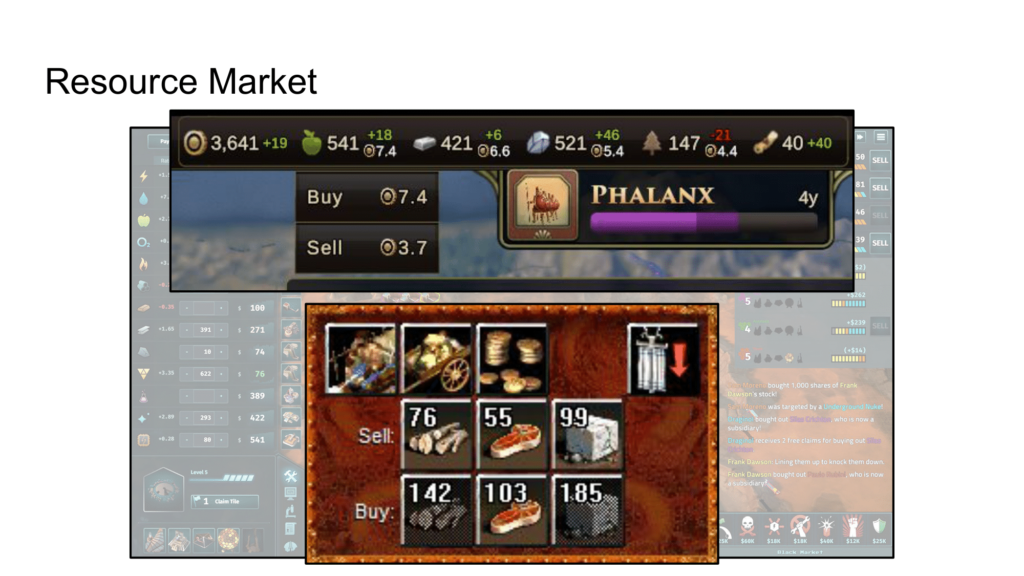
Word that though we have been making a sport with a free market, it’s not a sport ABOUT the free market, so as an alternative of getting a single value for all items, there could be some friction, so we used the unique system from Age of Empires the place the purchase value is double the promote value. Thus, whereas shopping for assets from the market is all the time an choice for the participant, it’s usually greatest to provide them your self.
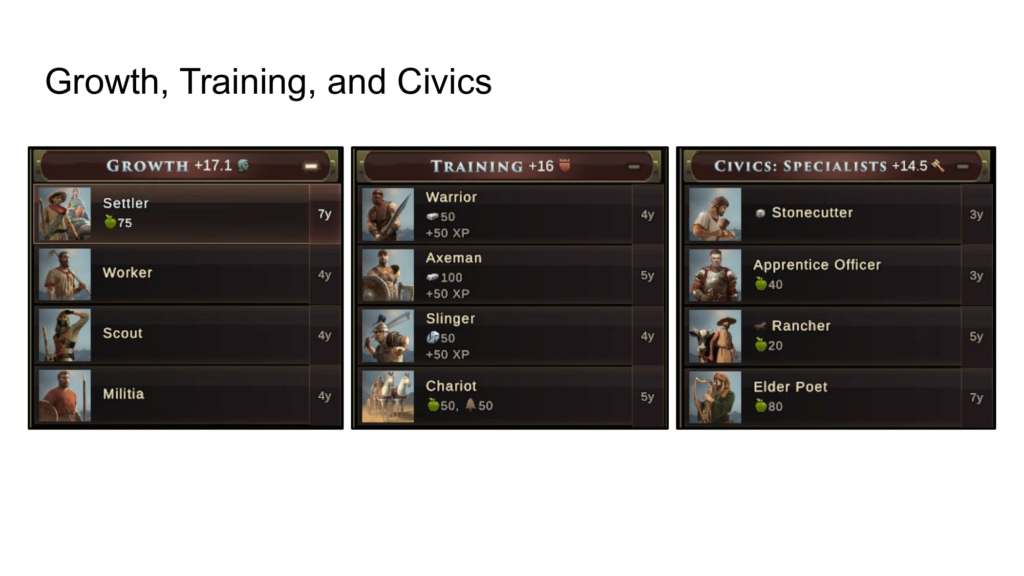
Civ has all the time had a generic Manufacturing useful resource, generally known as Shields, Hammers, or simply Manufacturing, however it went into constructing all the things – Settlers, Warriors, Temples, the Pyramids, all the things. I wished to separate this manufacturing into totally different classes in order that cities may truly specialize, one is likely to be good at constructing navy, one other at growing specialists, one other at creating settlers and employees, so we cut up Manufacturing into three classes: Progress, Coaching, and Civics.
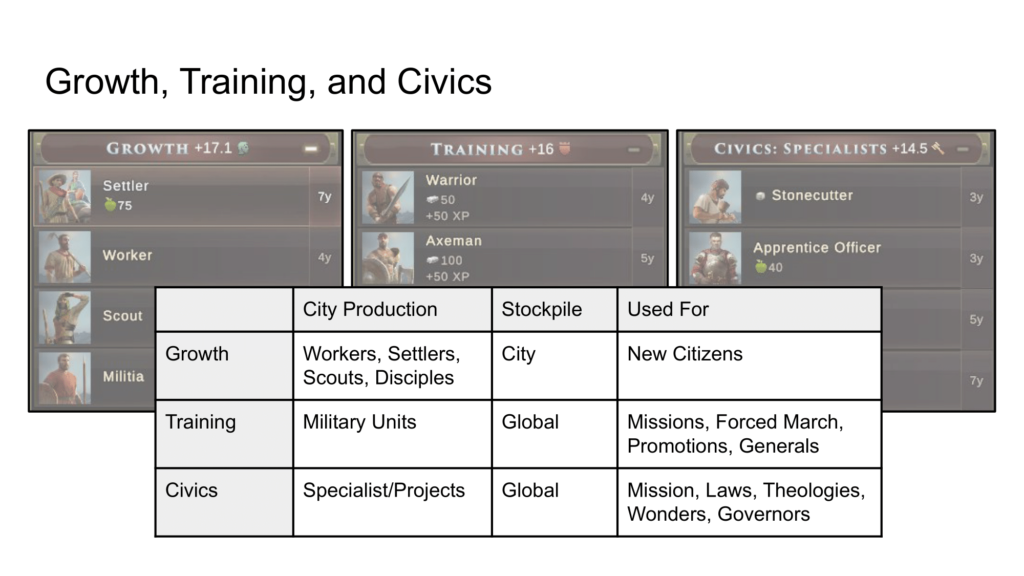
I didn’t initially know what to do with these yields when town wasn’t producing that sort of merchandise, however the stockpiles for meals, iron, wooden, and stone have been working so properly that I made a decision to attempt that for Coaching and Civics. I didn’t know precisely what I’d use it for however was assured that I’d discover a use for it over time. As you may see, we ultimately discovered loads of makes use of for the worldwide Coaching and Civics stockpiles.
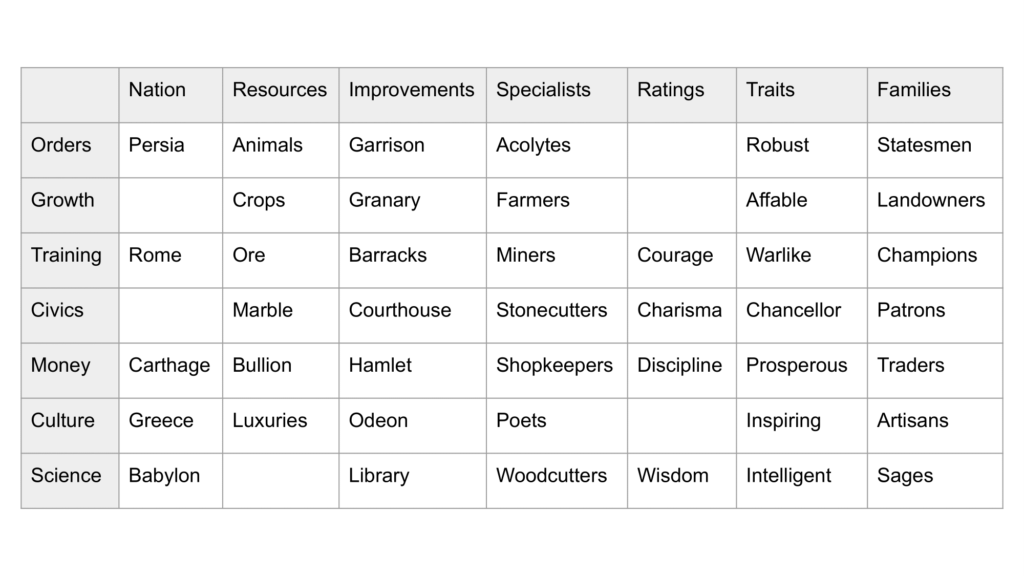
I put collectively this chart of all of the non-resource yields and the way they join with the sport. You possibly can see how each yield occupies a novel place within the sport, and even that is an incomplete record! We may additionally do it by Shrines, by Theologies, by Council, and so forth.
One other profit is that the code considers all of those yields, together with meals, iron, wooden, and stone, the identical sort of factor, so it is rather simple for the occasion system to counsel some uncommon tradeoffs. Would you prefer to sacrifice some orders for some further science? Possibly commerce your civics to a different nation for meals in return?
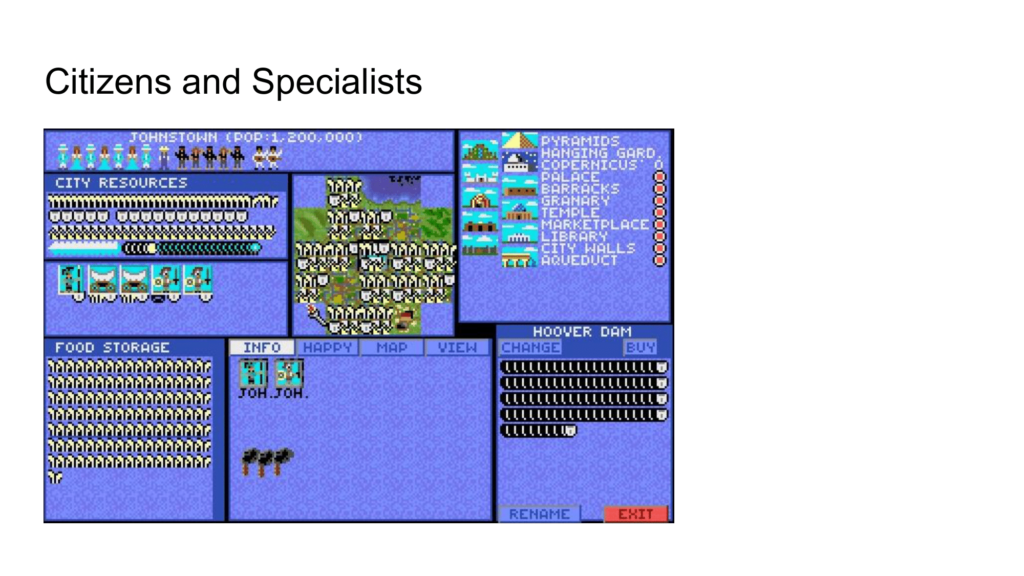
Considered one of Civ’s most troublesome programs is the tile/citizen mannequin, the place your meals, manufacturing, and commerce is decided by which tiles your residents work. It’s a sophisticated system. Right here’s the Civ 1 metropolis display screen – I bear in mind one Civ developer as soon as quipped that it’s greatest characteristic was that for those who clicked wherever, it simply went away and also you have been not afraid.
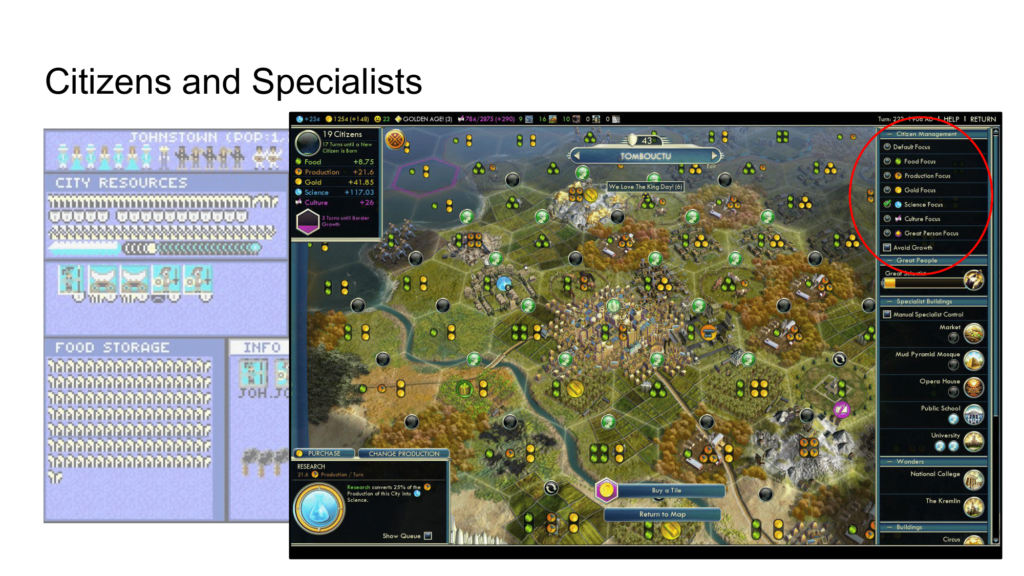
Every citizen in a metropolis is assigned to a particular tile, and these tiles all have totally different yields, and the participant has the liberty to maneuver each citizen round each flip. Over time, the designers have added all kinds of automated programs to encourage gamers to not mess with their residents. (And bear in mind with employees how automation is a pink flag?)
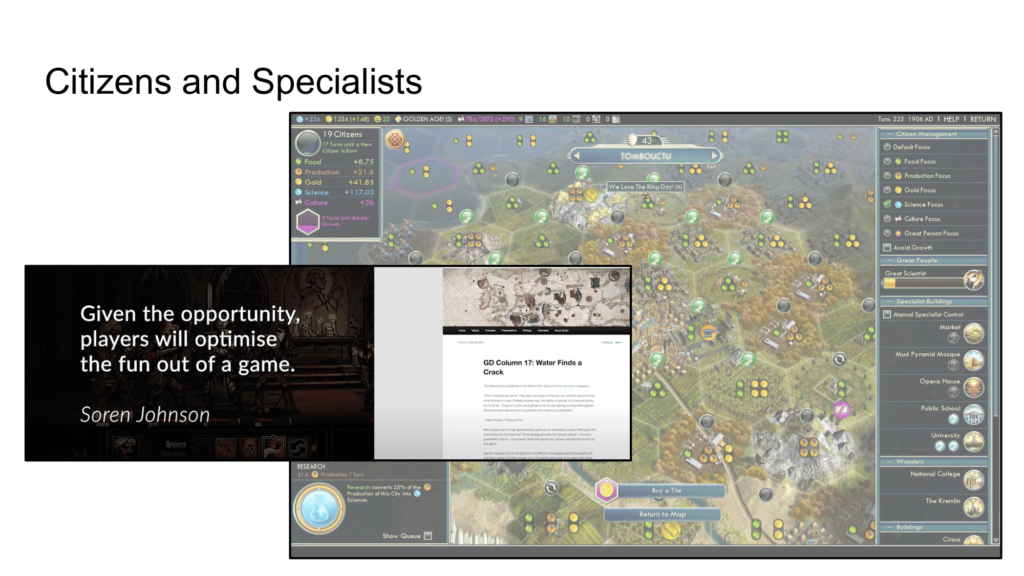
Even worse, for hardcore gamers, the citizen system is a temptation to lose hours and hours of time with useless micromanagement as a result of there isn’t any price to shifting your residents round each flip, to eek out some small 1% profit. These should not enjoyable choices. There’s a sample to those programs which suck the participant into boring micromanagement – they lack any actual tradeoffs, both as a result of they don’t have any prices or as a result of they’re non permanent. Attention-grabbing choices come from giving one thing up and from making choices that you just’ll must dwell with for the remainder of the sport. Choices the place you must assume holistically previous the data horizon. You aren’t simply doing math to determine what provides you a single further meals this flip; as an alternative, you’re making an intuitive determination about what may get you extra meals farther down the street AND whether or not meals can be roughly beneficial to you latter on than it’s proper now.
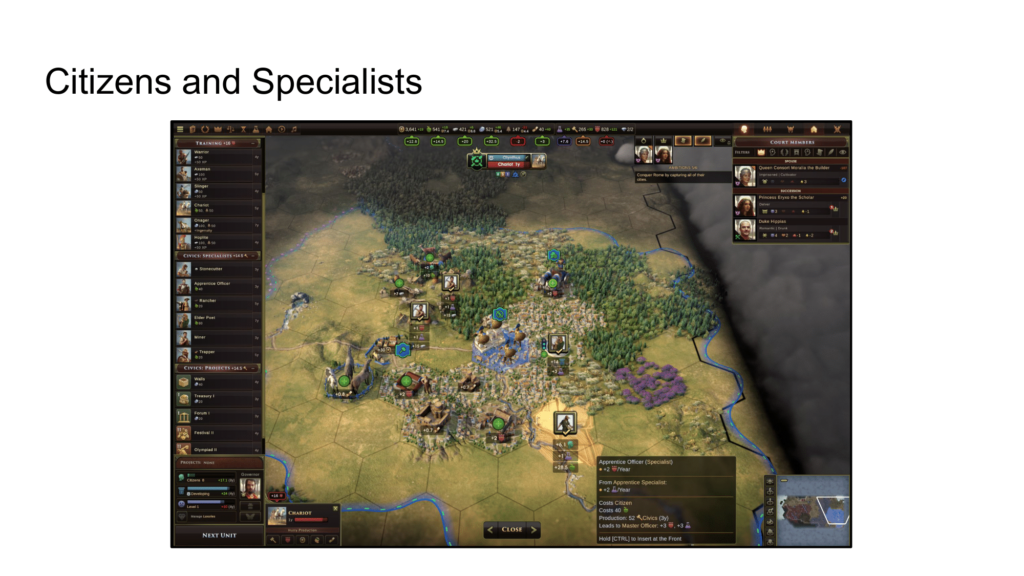
Our manner out of this drawback is to have ALL enhancements produce yields on their very own, however Residents could possibly be completely become Specialists on an enchancment to spice up its output by 50-100% and provides a number of different advantages, like further science. Additional, these Specialists would every have a value, each a meals price and a chance price. Constructing a Trapper or a Poet doesn’t simply price Meals, it additionally means your metropolis isn’t constructing a Chariot or one other Settler. Extra importantly, although, your choices could be everlasting, there isn’t any alternative to return to micromanage and rewind your choices. Everlasting choices are an important device for a designer – it provides the participant the liberty to maneuver ahead and never optimize the enjoyable out of the sport.
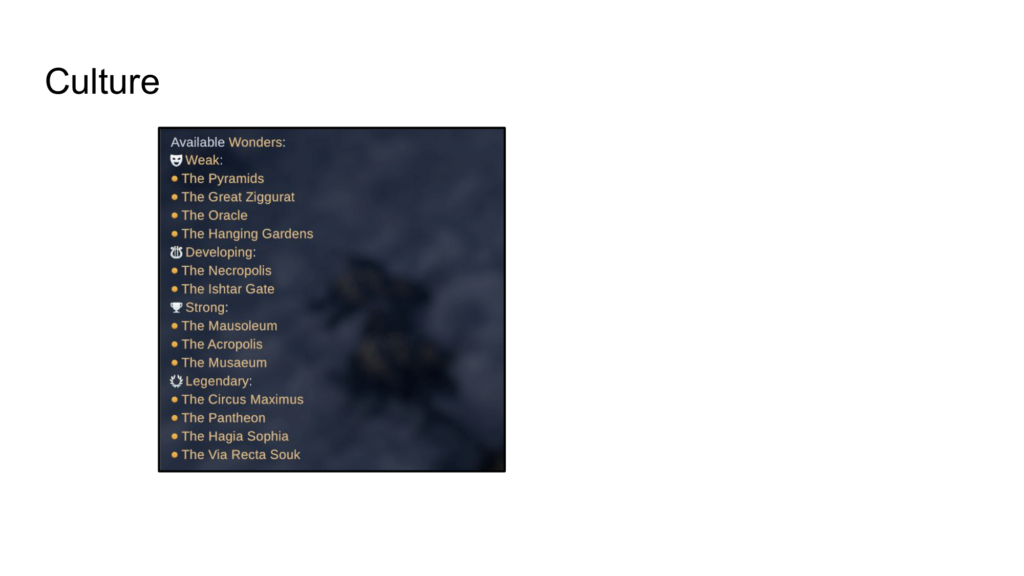
Lastly, let’s discuss Tradition, which as I discussed earlier than, not determines borders. As an alternative, Tradition is now measured in 4 discrete steps that decide the inner development of your cities. (Brian Reynolds truly advised I rename Tradition to “Civilization”… however that was too cheeky for me.) Having 4 separate tradition ranges per metropolis was a brand new orthogonal solution to measure progress outdoors of the tech tree. Thus, Wonders should not unlocked by techs however by CULTURE, which additionally permits us to rotate those obtainable every sport.
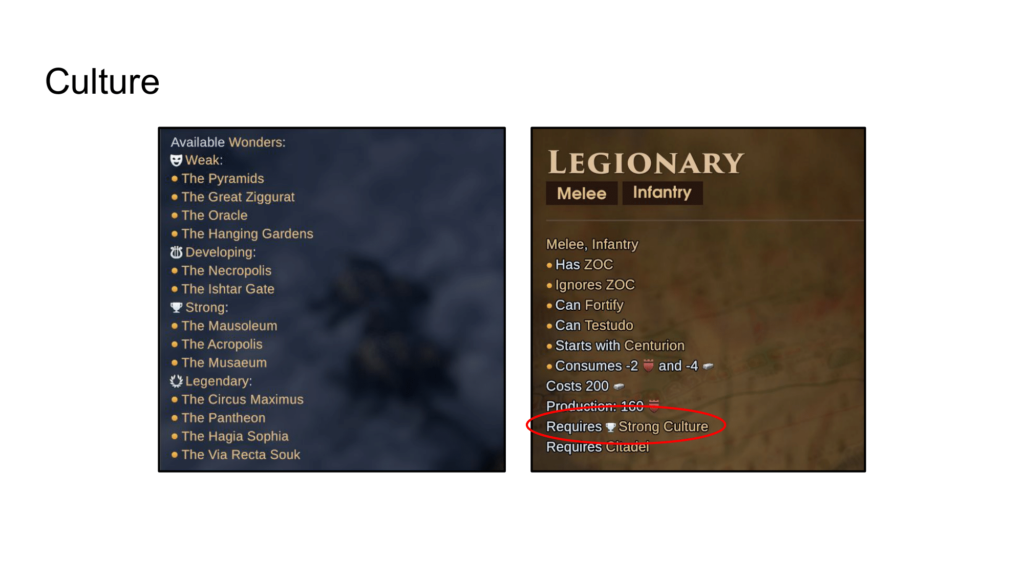
We may additionally tie your nation’s distinctive items to a metropolis’s Tradition stage, and likewise many city buildings, so Courthouses would require cities with Growing Tradition, Ministries would require Robust cities, and Palaces Legendary ones.
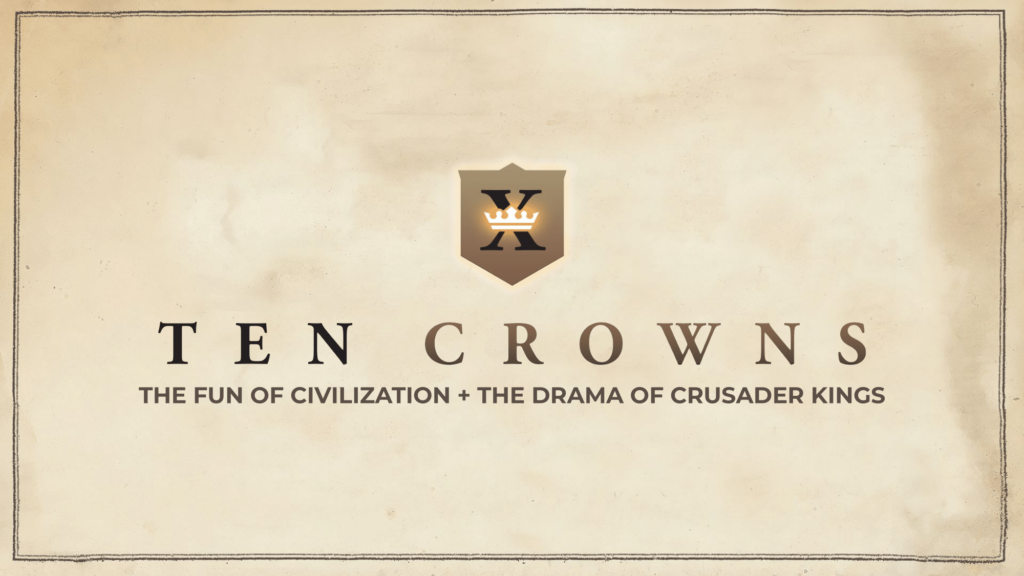
Now that we felt good in regards to the gameplay, we felt it was protected to start out exposing publishers to our concepts. That is the primary slide of our pitch deck. Word that it was once known as Ten Crowns, and the easy elevator pitch is correct there within the first slide: The Enjoyable of Civilization plus the Drama of Crusader Kings. Anticipate many issues to vary about your design, together with the title, however it’s vital to have a core imaginative and prescient that doesn’t change. Certainly, a lot of the critiques for Previous World describe the sport precisely this manner, as a hybrid of Civilization and Crusader Kings.
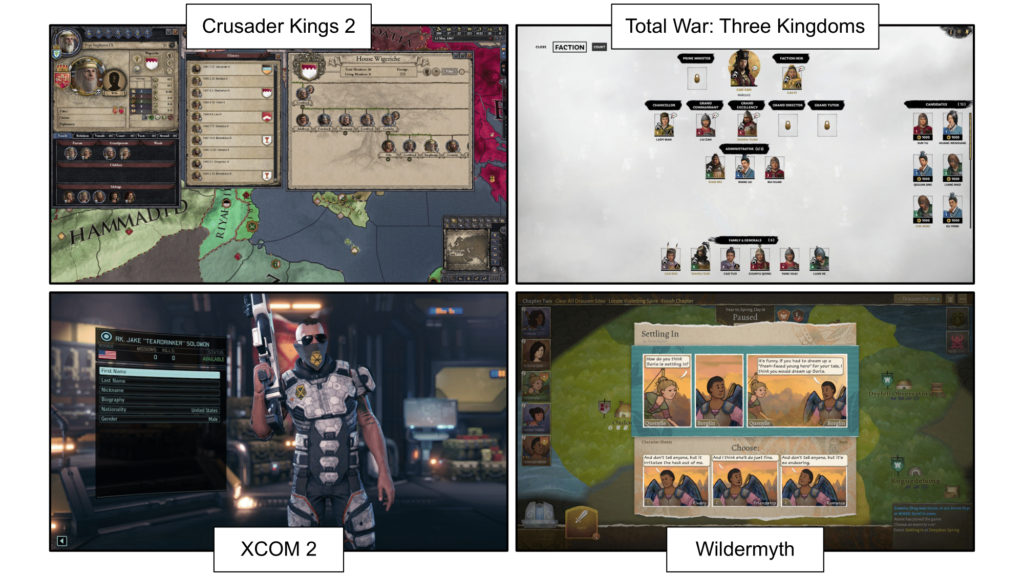
The preliminary impetus for characters initially got here from the recognition of Crusader Kings – we may see how a lot gamers latch onto actual characters who’re born, develop, age, decline, and die. It’s not simply CK, although, you possibly can see this pattern from XCOM via the Complete Warfare collection as much as new video games like Wildermyth. Folks need to care in regards to the characters of their video games.
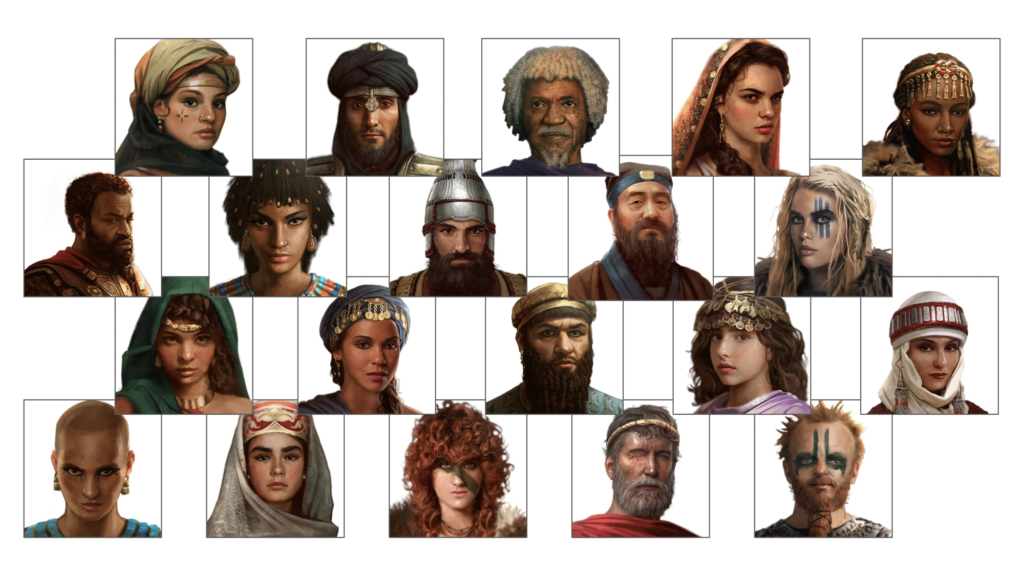
Nevertheless, the larger query is WHY would a sport like Civ profit from characters. First off, we should always point out that it’s truly unattainable to place flesh-and-blood folks into Civ as a result of the sport covers 6,000 years of historical past. That’s why we restricted our timeframe to only Classical Antiquity, in order that the sport may plausibly final a number of generations. Nonetheless, ignoring the thematic points, how would characters change the GAMEPLAY of Civ?
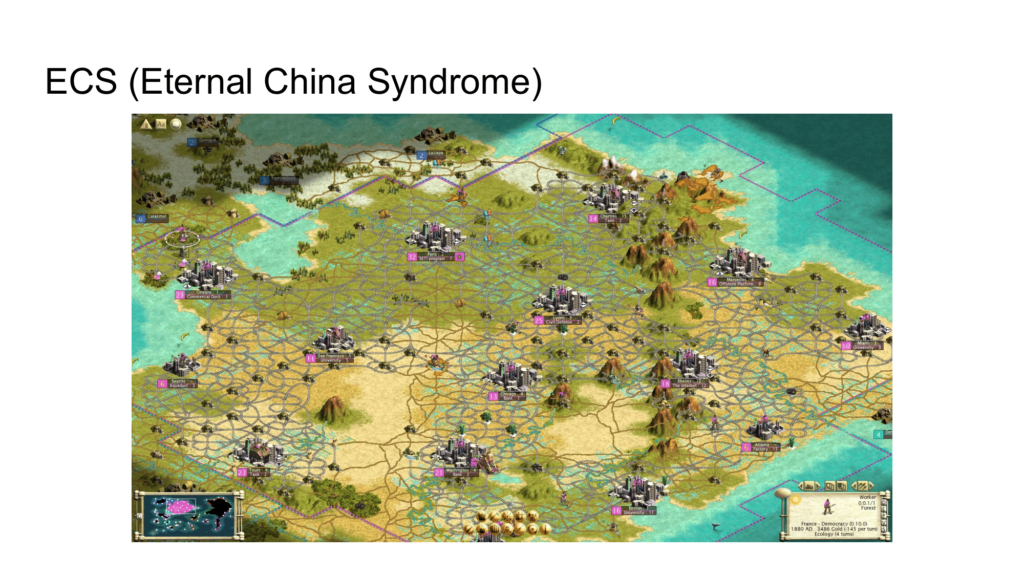
To reply that query, let’s discuss one other long-standing drawback with Civ often known as ECS – the Everlasting China Syndrome. It implies that over time, Civs grow to be extra steady, much less dynamic, and fewer attention-grabbing to handle. As they add increasingly more buildings and wonders and legal guidelines and applied sciences, the inner issues get much less and fewer attention-grabbing. A bonus that was attention-grabbing 30 turns in the past now simply fades into the background. The one actual strain exerted on the participant is from exterior forces – enemy gamers.
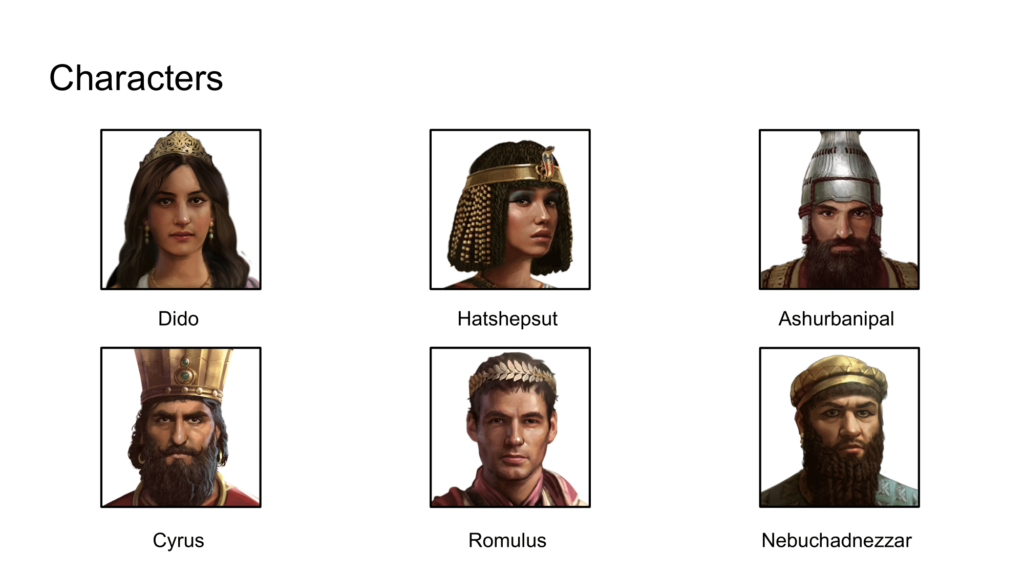
Character, nonetheless, present a manner out of the ECS drawback. Buildings and applied sciences by no means get outdated and die, however character positive do. If we connect powers to characters, the sport will shift as totally different leaders take and go away the throne – to not point out new courtiers, heirs, councilors, spouses, and so forth. The dynastic panorama is consistently altering. Civ is likely to be much more attention-grabbing if, say, the map modified each so many turns. Sadly, that simply doesn’t make any sense thematically even when it will be good for gameplay.
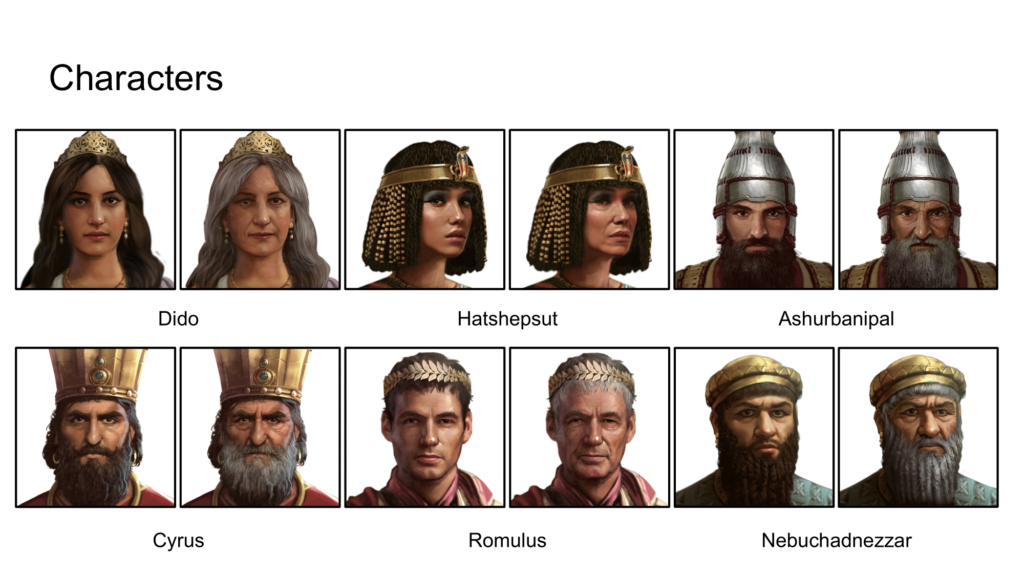
Nevertheless, characters altering, rising outdated, and dying, doesn’t simply make sense, gamers EXPECT it to occur. I can’t overstate how vital that’s – taking powers away from the participant in Civilization is mainly a non-starter, but here’s a scenario the place gamers could be upset in the event that they DIDN’T lose these powers.
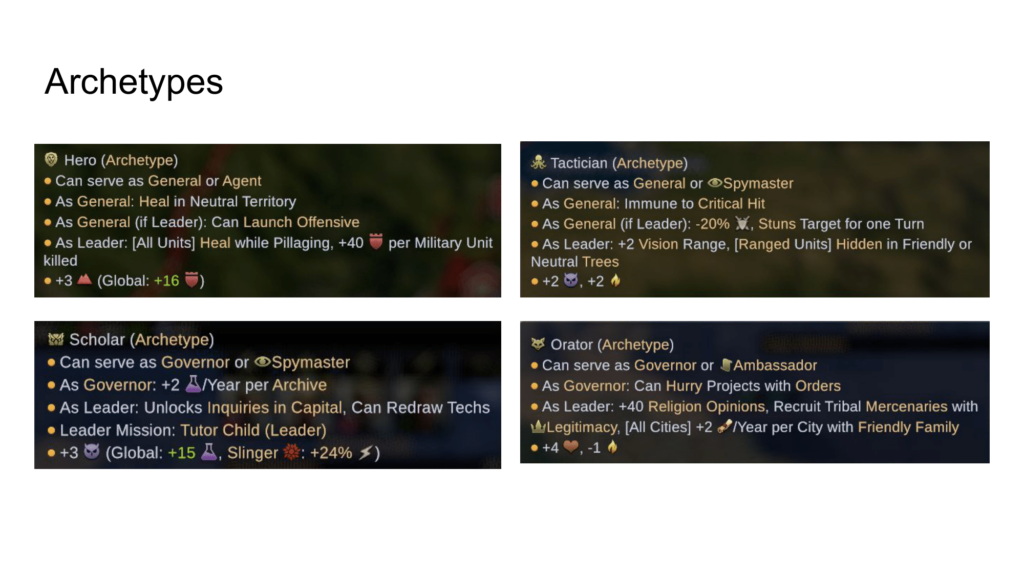
Certainly, we are able to add powers to characters that may usually be unattainable so as to add to the sport in the event that they have been accretive in the way in which Civ normally works – that means that when you unlock the ability, it by no means goes away. Every character in Previous World is one in all 10 archetypes, every with particular powers if that archetype sits on the throne. As a result of gamers solely have partial management of archetypes, we are able to add vital, game-changing talents right here, realizing they are going to be energetic roughly 10% of the time. Hero leaders can Launch Offensives (which permits items to assault twice a flip), Orators can rent tribal items as Mercenaries, Tacticians can Stun enemy items, and so forth.
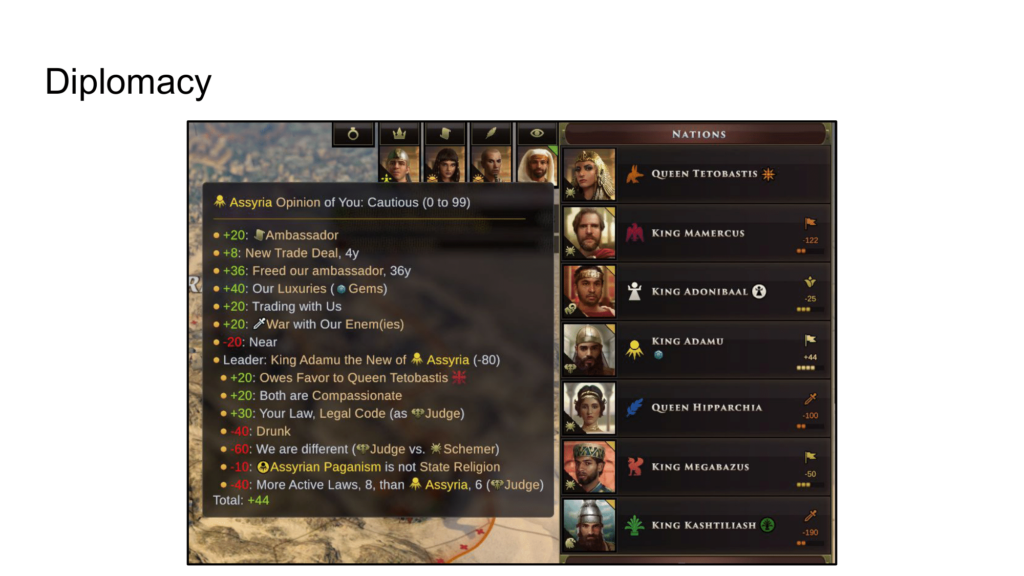
Dynamic characters are additionally an enormous boon for diplomacy, an space the place sudden modifications are all the time tough to drag off. In Civ video games, if a pleasant ally out of the blue assaults you, it’s usually describe as “random” or “unpredictable” AI, regardless that it’s essential for the circulation of the sport that the AI’s ARE prepared to vary their opinion of you (or else the Everlasting China Syndrome applies to them as properly). With characters, nonetheless, it’s anticipated {that a} nation will change its opinion of you when a brand new ruler takes the throne. We didn’t design this – it simply flows naturally from including actual folks into the sport. Thus, an issue that has bedeviled Civ for many years was solved in a manner that feels pure to the participant.
[ad_2]